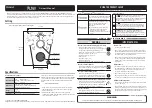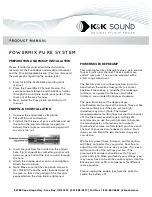
Remote control
R&S
®
ZNA
864
User Manual 1178.6462.02 ─ 20
Before passing on the data to the hardware, the settling bit in the
STATus:OPERation
register is set (see
Chapter 6.5.3.4, "STATus:OPERation"
ware executes the settings and resets the bit again as soon as the new state has set-
tled. This fact can be used to synchronize command servicing.
Queries induce the data set management to send the desired data to the output unit.
6.4.4
Status reporting system
The status reporting system collects information on the instrument state and makes it
available to the output unit on request. The exact structure and function are described
in
Chapter 6.5, "Status reporting system"
6.4.5
Output unit
The output unit collects the information requested by the controller, which it receives
from the data set management. It processes it according to the SCPI rules and makes
it available in the output buffer. If the information requested is longer, it is made availa-
ble in portions without this being recognized by the controller.
If the instrument is addressed as a talker without the output buffer containing data or
awaiting data from the data set management, the output unit sends the error message
Query UNTERMINATED
to the status reporting system. No data is sent on the GPIB
bus or via the Ethernet, the controller waits until it has reached its time limit. This
behavior is specified by SCPI.
6.4.6
Command sequence and command synchronization
IEEE 488.2 defines a distinction between overlapped and sequential commands:
●
A sequential command is one which finishes executing before the next command
starts executing. Commands that are processed quickly are usually implemented
as sequential commands.
●
An overlapping command is one which does not automatically finish executing
before the next command starts executing. Usually, overlapping commands take
longer to process and allow the program to do other tasks while being executed. If
overlapping commands do have to be executed in a defined order, e.g. to avoid
wrong measurement results, they must be serviced sequentially. This is called syn-
chronization between the controller and the analyzer.
According to
Chapter 6.4.3, "Data base and instrument hardware"
ting commands within one command line, even though they may be implemented as
sequential commands, are not necessarily serviced in the order in which they have
been received. To make sure that commands are actually carried out in a certain order,
each command must be sent in a separate command line. Examples:
Example 1: Commands and queries in one message
The response to a query combined in a program message with commands that affect
the queried value is not predictable. Sending
Command processing
















































